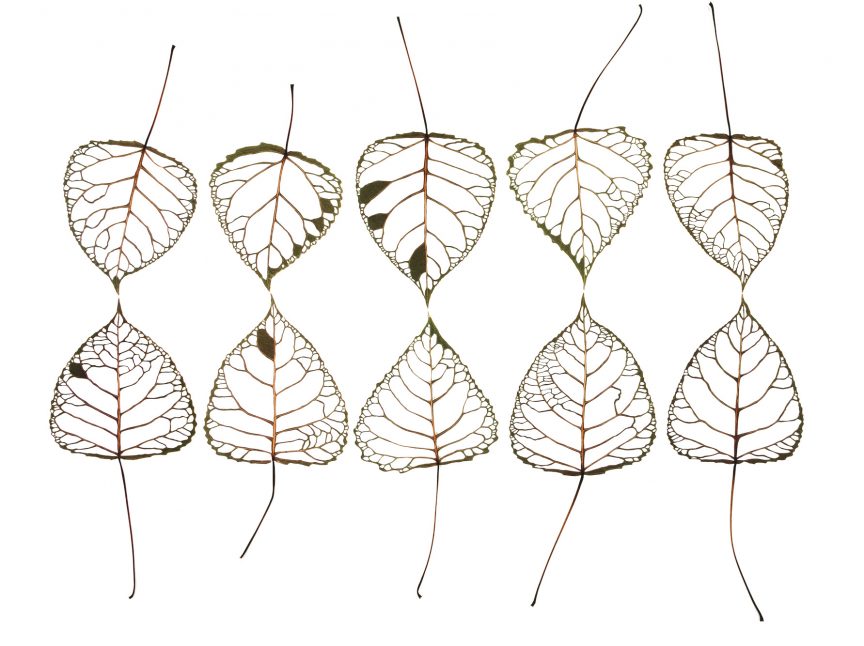Name: Hillary Waters Fayle
Which came first in your life, the science or the art?
Art came first in my life. On some level I believe I was always an artist—I was inspired to make things from an early age, whether that meant a drawing or a dress for a doll or a fort in the woods. I was also interested in the natural world from an early age, but I don’t think I recognized that part of myself as much as I recognized the artist. As a young teenager, I went to a summer camp which was dedicated to learning about the environment and stewardship practices. That was when I really knew that some kind of dedication to natural science and the need for conservation awareness would be central to my life. I had to make a choice when I was 18 to study art or science when I went to college, and it was always something I felt torn about until I learned how to integrate them.

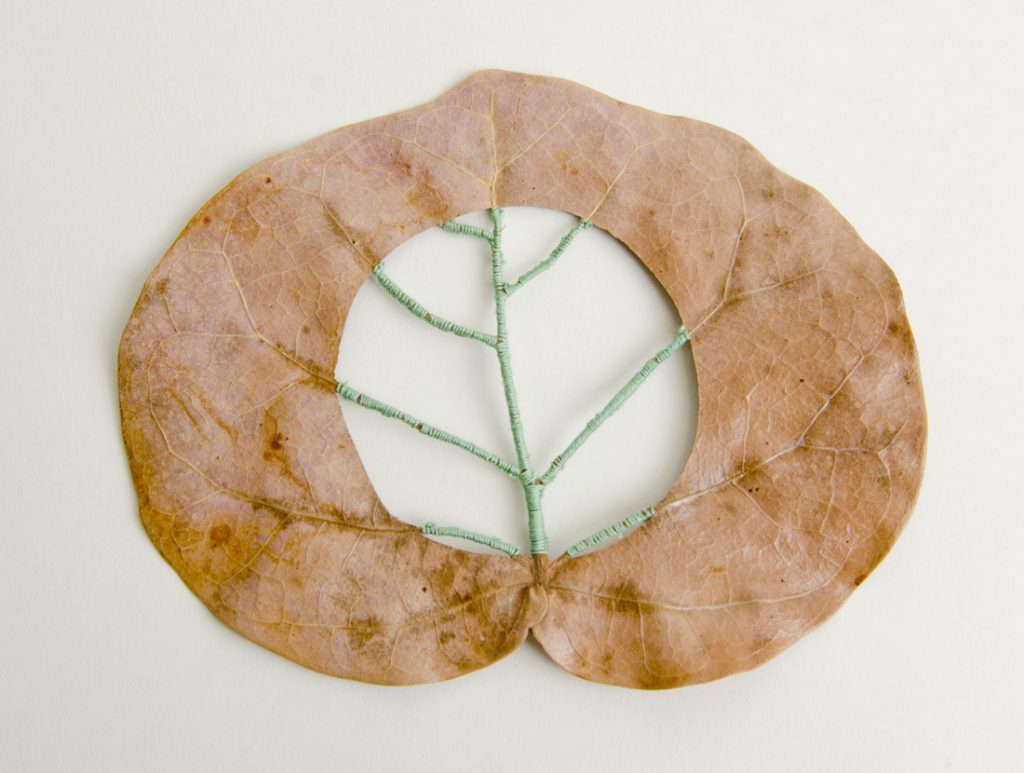
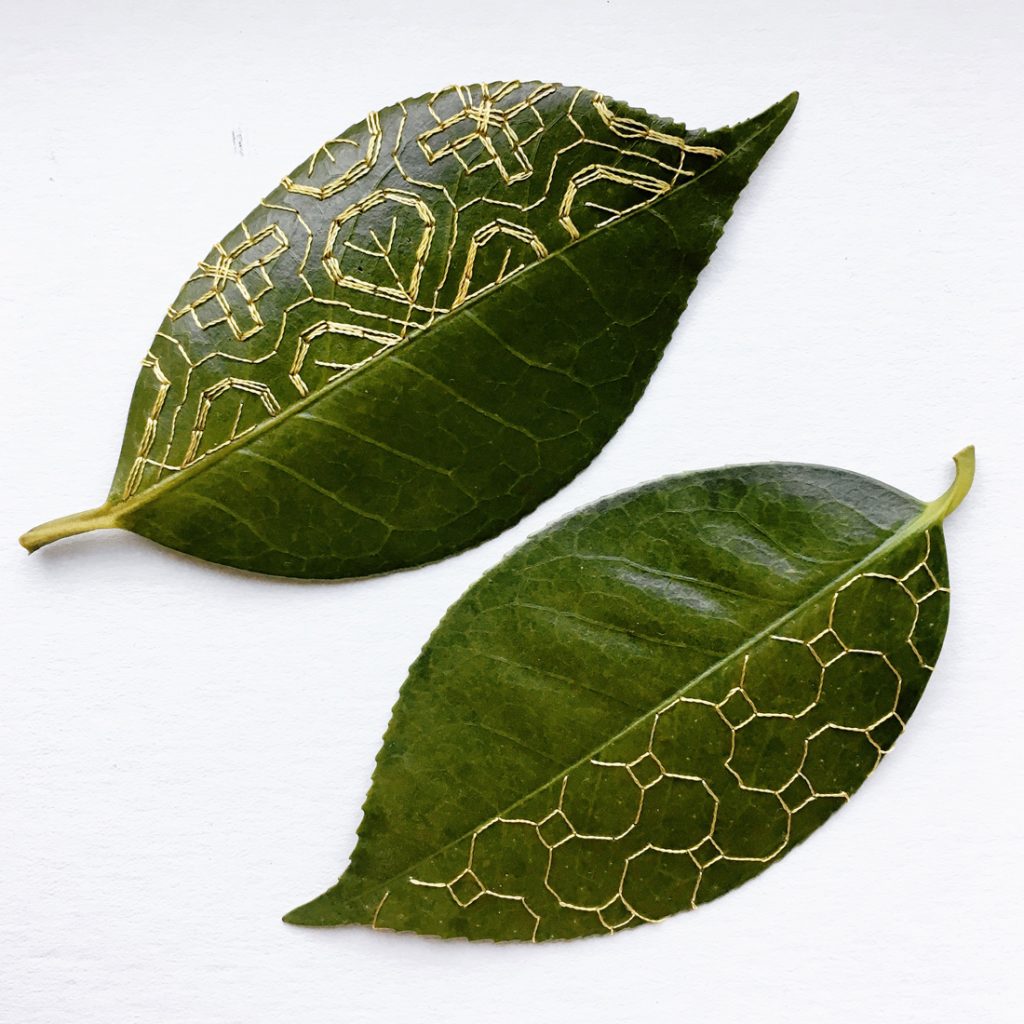
Which sciences relate to your art practice?
I think botany and dendrology are the most naturally related to my practice, although I take inspiration from all types of relationships in nature. I definitely have a real interest in plants, trees, the natural world, and its interlinking of ecosystems. I can really get into the science as it relates to my own work, but I can’t claim to be that knowledgeable—I’m not a trained scientist. I was selected to participate in an artist residency a few years ago that invited artists to come spend time at a biological field station. In working alongside scientists and students, I noticed how similarly we worked and how completely consumed we were in our respective research.
What materials do you use to create your artworks?
I study textile and printmaking traditions and processes, using them in collaboration with found botanical and organic material to symbolically bind nature and the human touch. These botanical embroideries and blueprints are born of my desire to illuminate this connection, as well as my curiosity about the overlapping of spiritual and religious symbology and sacred geometry with patterns that exist in nature. Now more than ever, it feels paramount to inspire a shifted perspective on the way we view the natural world—to explore and appreciate what is so often overlooked and to realize the potential for existence in balance with nature.
“Now more than ever, it feels paramount to inspire a shifted perspective on the way we view the natural world—to explore and appreciate what is so often overlooked and to realize the potential for existence in balance with nature.”
Hillary Waters Fayle
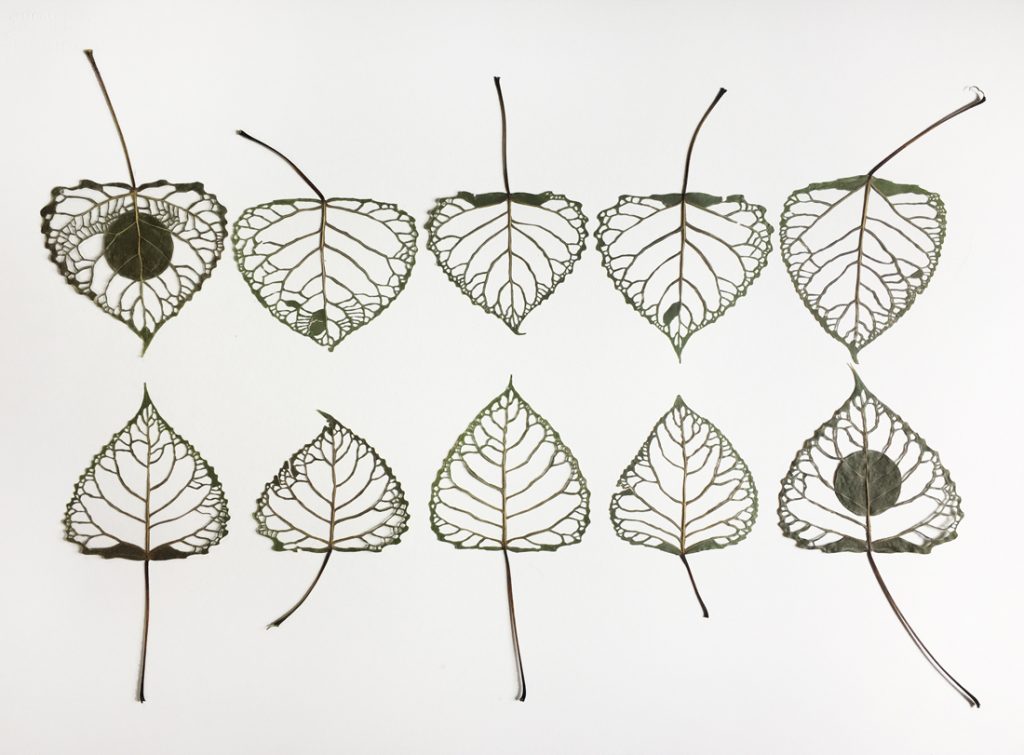
I take leaves—from plants in my neighborhood or my yard or anywhere, really—and I stitch or cut directly into them. In this case, I’m just using the leaf, needles, and thread. My partner was once a textile artist, and I use a lot of his hand-dyed thread in my work—that is, if the thread isn’t from my collection, which includes a lot of vintage spools from my family.
I also collect plants and have been using them to create large, intricate patterns which I then make blueprints of using the cyanotype process. In these works, I have been exploring the intersections of nature and spirituality and the abundance of ways in which naturally occurring shapes and patterns overlap with those of sacred geometry. In considering these visual echoes between the inner and outer landscapes, I seek to examine our connection to nature and emphasize our place in the cyclical and circular nature of all things.
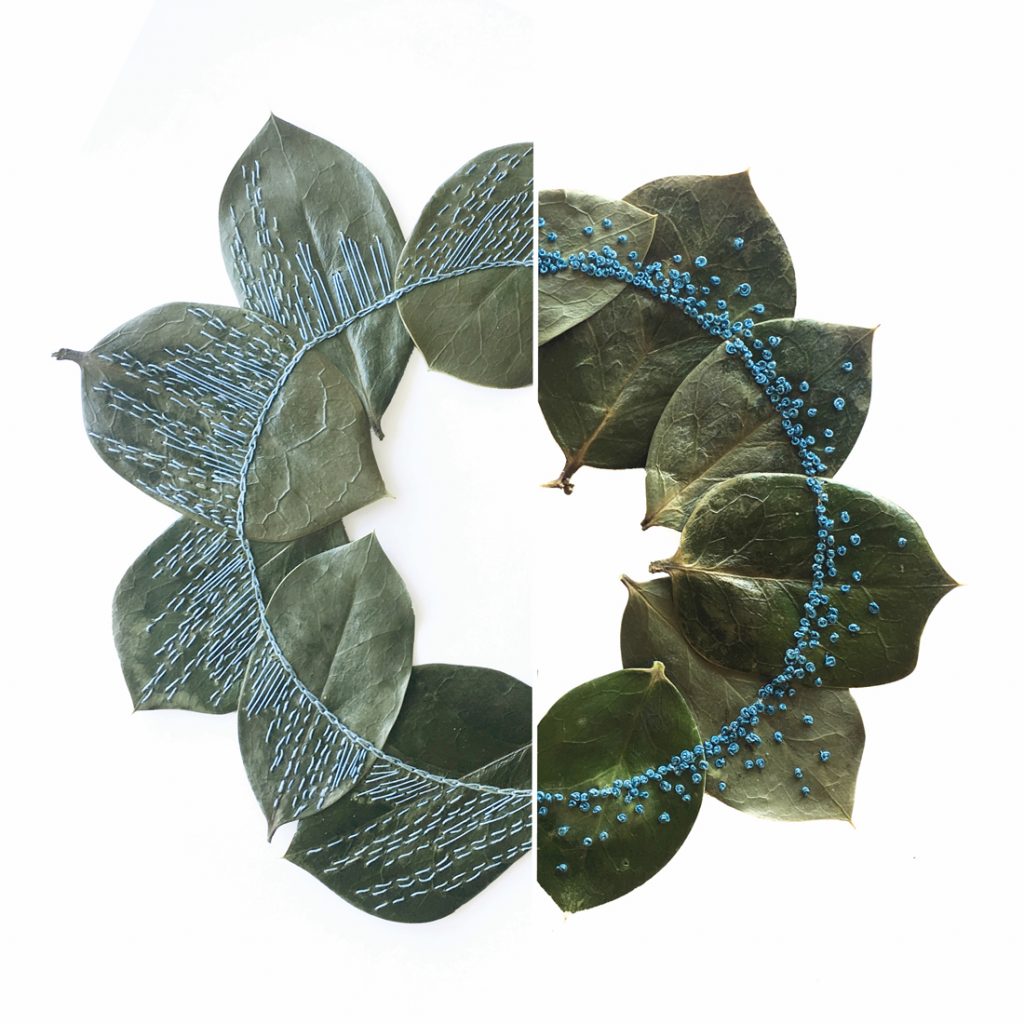

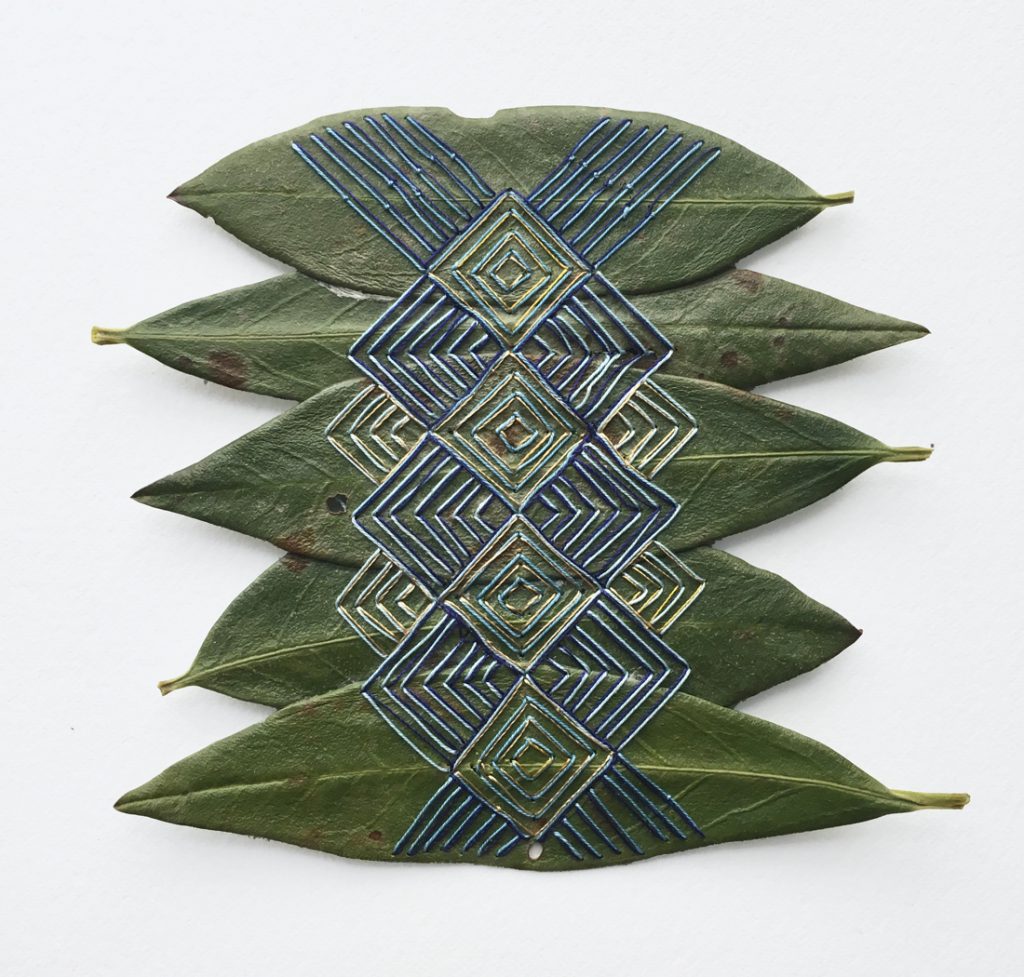
Artwork/Exhibition you are most proud of:
This summer I worked with the Albright-Knox Public Art Initiative to create a permanent public work in Buffalo, NY. Not only was this the largest project I’ve ever done, but I grew up in Western NY and my grandparents took me to the Albright-Knox frequently as a child. It was so validating and special to have been able to collaborate with them on this project, which was a bit of a departure from my smaller scale works.
During Buffalo’s annual Garden Walk this past summer, the community was invited to create cyanotype prints of plants from their gardens. The prints were digitized and turned into a design, which was then painted as a 40 foot mural in downtown Buffalo. The concept of this project was to explore both individual connections to plants and the idea of the city as a garden. Plants are a marker of place, a connection to the land and to our past. Native or invasive, the plants of our homes feel like old friends to us. Plants in our gardens, as in any natural ecosystem, support one another— they provide beauty in their diversity, and they work together to create a unified community. We can use that metaphor to talk about our own communities and to celebrate the beauty in the diversity of urban environments.
“Plants are a marker of place, a connection to the land and to our past. Native or invasive, the plants of our homes feel like old friends to us.”
Hillary Waters Fayle
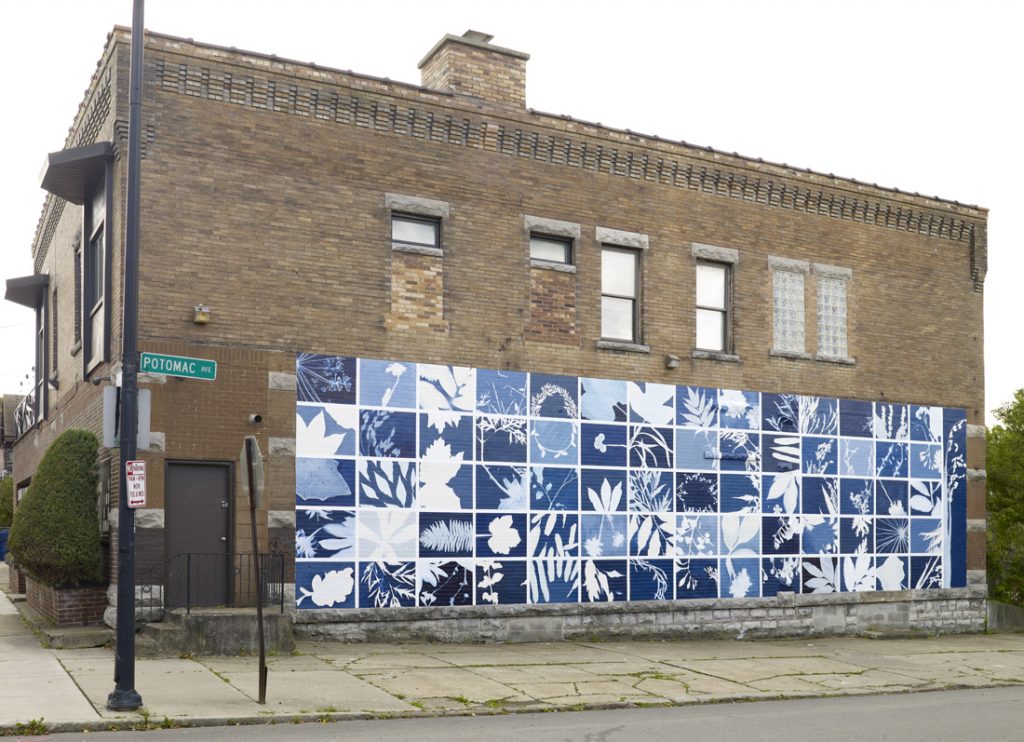

Which scientists and/or artists inspire and/or have influenced you?
Andy Goldsworthy is an artist who inspired me at a young age. His work in transforming materials and the importance of the ephemeral nature of all things really changed the way I understood what art could be. I’ve also been inspired by William Morris and his focus on nature and the importance of bringing natural motifs indoors and into the textiles that surround our lives. He was also a champion for craft and the importance of making with one’s hands, which is something I feel very strongly about as well. Photographer and botanist Anna Atkins stands out to me as well. Her work has been really influential in the past few years for me, as has the work of Susan Goethel Campbell and Motoi Yamamoto.
Is there anything else you want to tell us?
I feel so grateful to be on this planet, making art about the incredible organisms here and our connection to them. Truly, each day is a gift—and I’m so glad that I can share that with you today.
Find out more at Hillary Waters Fayle’s website or Instagram.
Share this Post

